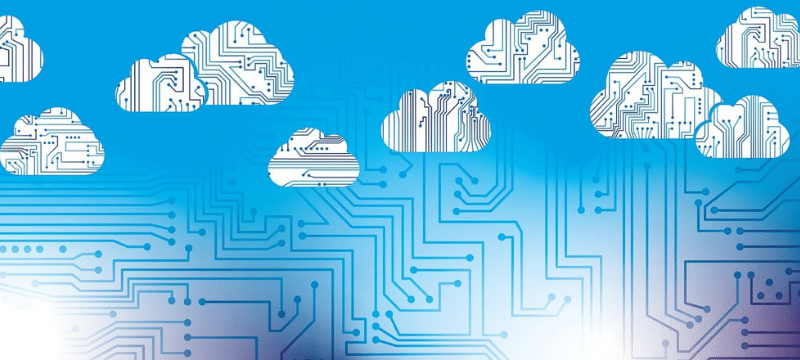The New Playbook: Essential Cloud Computing Trends for 2025
Cloud

After a decade of cloud-first strategies, 2025 marks a shift toward cloud-smart decisions. Organizations are moving beyond migration checklists to focus on workload optimization, intelligent resource allocation, and measurable performance improvements.
Companies rushed to the cloud first, then figured out how to use it efficiently. Now we’re in the optimization phase, as teams prioritize how to extracting maximum value from existing cloud investments.
Here’s a look at how the cloud computing trends in 2025 are addressing these efficiency gaps.
AI-powered infrastructure for smarter autoscaling
Our first cloud trend, the marriage of artificial intelligence and cloud computing, took off in the early 2010s, as both fields matured simultaneously. During its initial days, “AI-powered cloud” was seen as a vague concept of unclear optimizations. The reality is far more specific and impactful today. The significant breakthrough lies in workload placement algorithms that possess a profound understanding of application behavior patterns at the container level.
Why this matters now
The problem with traditional cloud computing auto-scaling has always been its reactive nature. The process essentially waited for CPU or memory thresholds to be breached before initiating scaling actions. As a result, you’d inevitably experience cold starts and degraded performance before the system could catch up and resolve the problem.
The modern solution
Today’s eBPF-based load balancers use machine learning to predict traffic patterns, so you can get ahead of problems before they happen. Instead of merely reacting to metrics, these systems now actively analyze packet flows, predict future traffic patterns based on historical data, and pre-position containers across availability zones. The outcome can vary from a marginal gain to a significant reduction in cross-AZ data transfer costs and cold start delay penalties, potentially up to 60-80%, all while enhancing data security through more efficient and predictable resource management.
Implementation use-case: Autonomous resource provisioning
Cloud technologies are getting smarter about provisioning of computing resources. Modern auto-provisioning solutions use reinforcement learning to get smarter about what to scale and when. Instead of just reacting, these solutions actively optimize by choosing the precise instance types your AI workloads need, right when they need them.
An machine learning technology job, for instance, will automatically receive compute-optimized instances, while a web service will be assigned memory-optimized ones. For teams managing a diverse portfolio of applications, this eliminates a long-standing architectural compromise. You’re no longer forced to over-provision for peak loads or accept degraded performance during scaling events to reduce cloud costs.
Edge-cloud integration for true distributed computing
For years, the promise of edge computing was exciting, but mostly in theory. Managing IoT devices at the edge and cloud infrastructure as completely separate entities was a major challenge for most organizations. They had to manually deploy applications, configure each site individually, and then painstakingly build custom integrations to connect their edge computing systems with cloud services.
The core problem solved
The shift we’re seeing in 2025 fundamentally redefines this. Instead of isolated entities, the new approach treats edge and cloud computing as a single, cohesive distributed system. With orchestration platforms like K3s and OpenYurt, managing Kubernetes clusters across numerous edge locations and different cloud providers has become seamless. These platforms provide a single, unified control plane for everything. What does this mean in practice? Instead of deploying separate applications to different cloud environments, you can define workloads once and let the orchestration system intelligently decide the optimal placement based on real-time conditions (such as latency, load, and resource availability).
This intelligence can also be extended to traffic management. You can add service mesh layers to handle automatic traffic routing between edge and cloud locations. Without any manual configuration, these meshes continuously measure latency, monitor cloud resources availability, and dynamically route user requests to the best available endpoint. That’s a huge leap from the past, where developers had to hard-code endpoint URLs and manually update routing rules every time an edge location went offline.
Implementation use-case
Consider a global video streaming service. Under the legacy model, you’d maintain separate transcoding services at each edge location through manual cloud deployment processes. When local edge capacity exceeded demand, expensive computing resources would sit idle. Conversely, when demand spikes, users would experience delays while additional cloud resources slowly spin up to compensate.
With the recent advancement, you can now efficiently utilize edge locations for real-time video transcoding and rapid content delivery. Concurrently, its computationally intensive recommendation algorithms can run in the central cloud. The service mesh dynamically routes user requests to the optimal location, and workloads gracefully migrate based on demand patterns. During peak hours, additional transcoding capacity spins up automatically in nearby cloud regions; during off-peak times, everything consolidates to edge locations to minimize costs and maximize efficiency.
Avoid multi-cloud vendor lock-in with specialized workloads
Each cloud provider has its own unique set of APIs, SDKs, and management tools. Deploying an application to one cloud service provider could be fundamentally different from deploying it to another. Achieving the “best of breed” for every component of your application stack can, however, incur massive operational overhead. For this reason, tech leaders remain cautious of vendor lock-ins when it comes to a multi-cloud setup. They continue to adopt multi-cloud strategies defensively, often by attempting to build applications to the lowest common denominator across multiple cloud providers.
Why this is technically significant
Organizations are now frequently adopting architecting strategies to help them leverage specific cloud providers for their technical strengths. Instead of building for the lowest common denominator, you can optimize individual cloud services for the best available infrastructure, while maintaining operational consistency through unified cloud deployment pipelines. With cloud-native orchestration platforms like Crossplane and ArgoCD, you can now deploy the exact same application definition across multiple clouds, while dynamically binding to the optimal underlying cloud services from each provider. The distinct advantage of this is that you can write your application once, and the orchestration layer handles the cloud-specific deployment details.
Implementation use-case
One financial services company implemented a highly specialized multi-cloud strategy. They commissioned their real-time fraud detection AI workloads on a cloud environment optimized for extreme machine learning inference speed. Simultaneously, they migrated their critical customer data to Kamatera’s cloud platform, valuing its robust and diverse database ecosystem. For their .NET applications, they transitioned to a third cloud provider that offers strong support for Windows containers and seamless Active Directory integration. They accomplished this by adopting a Kubernetes-centric architecture across all environments, effectively using it as a universal control plane. As for interoperability, they leveraged advanced networking between their distinct cloud environments using dedicated cloud interconnects and virtual WAN solutions. Regardless of which cloud they resided in, these underlying network fabrics allowed their services to communicate efficiently and securely in a distributed setup without introducing latency.
Serverless: Is container orchestration dead?
For our last of our cloud computing trends, serverless computing has solved the cold start problem for most use cases. Modern serverless platforms now support large container images (up to 10GB) with sub-second cold starts, and can scale from zero to thousands of instances in under 200ms. A rapid responsiveness eliminates the primary performance concern that limited its earlier adoption.
Why this is technically significant
The significance lies in the support for stateful workloads on account of persistent connections and shared memory. You can also leverage advanced extensions or APIs within these platforms to maintain database connections and cache state between invocations. Ultimately, the statelessness constraint is eliminated that previously restricted serverless architecture to purely ephemeral, event-driven functions, opening it up to a much broader range of traditional application patterns.
Implementation use-case
For instance, a typical web application stack of React frontend, Node.js, PostgreSQL database can now run entirely serverless with better performance and significantly lower operational overhead than container-based deployments for most traffic patterns.
If you have SaaS applications with variable traffic, the economics can be quite compelling. A SaaS application serving 100,000 users might cost $2,000/month on serverless versus $8,000/month on a container platform when accounting for idle capacity, management overhead, and scaling complexity. However, it is important to note that high-throughput, sustained workloads (like continuous data processing) still benefit from container deployments. The break-even point is roughly at 40% sustained CPU utilization.
DevOps can now help with ‘Infrastructure as Everything’

The core concept of bringing infrastructure, cloud security, and application concerns closer has been evolving for years. Infrastructure as Code (IaC) has been around for over a decade, and the idea of “shift left” security (DevSecOps) has gained significant traction for many years now.
In 2025, this convergence has reached a new level of maturity, integration, and widespread adoption, making it genuinely operationalized for a much broader range of organizations.
| Aspect | Pre-2020s | Advancement in 2025 |
| Infrastructure as code (IaC) | IaC tools (e.g., Terraform, CloudFormation) existed for provisioning infrastructure. | Maturity of unified IaC tools: Tools like Pulumi and CDK enable defining all aspects (infra, security, monitoring, compliance) in a single codebase using general-purpose programming languages. |
| CI/CD pipelines | Automated pipelines for building and deploying applications were common. | GitOps for everything: Widespread adoption of GitOps platforms (ArgoCD, Flux) actively reconciles the entire environment’s state (infra, security, apps, compliance) against Git. |
| DevSecOps integration | DevSecOps was a goal, but often involved separate security tools and manual gates. | Policy-as-Code integration: Deep integration of policy-as-code frameworks (e.g., OPA/Gatekeeper, Kyverno) directly into GitOps pipelines. Security and compliance rules are automated and enforced pre-deployment (preventing misconfigurations) and post-deployment (continuous auditing). |
| Security & observability definition | Security policies often defined in isolated systems or spreadsheets. Monitoring configurations typically in separate tools. | Shift to “built-in”: Security and observability are baked directly into the earliest stages of definition within the same IaC code, making them inherent to the automated pipeline. |
| Operational handoffs | Frequent handoffs and “throw-it-over-the-wall” mentality between Dev, Ops, and Security teams, even with automation. | Shared responsibility & automation: Eliminates traditional handoffs by unifying definitions and automating enforcement. |
| Consistency & reliability | Inconsistent environments due to manual steps or fragmented tooling, leading to “snowflake” servers. | Automated consistency: Continuous reconciliation and enforcement via GitOps ensures environments are always consistent with their desired state, reducing configuration drift and manual errors. |
Implementation use-case
With the new operational model, every aspect of an organization’s cloud environment is defined in a single, version-controlled codebase. When a development team proposes a new feature requiring changes to application code, database schemas, and network policies, they will submit a single pull request. The single definition, written using modern IaC tools, can specify:
- The application’s container image and its desired configuration
- The required database resources and their encryption settings
- The precise network firewall rules and cloud security group definitions
- The necessary IAM roles with least-privilege access
- The logging and monitoring configurations, including specific alerts for data security anomalies
Conclusion
The cloud computing trends shaping 2025 represent a fundamental shift in how organizations approach infrastructure. Recent advancements reward organizations that optimize existing systems, rather than simply adding new services.
AI-powered resource allocation, intelligent edge-cloud distribution, and mature serverless architecture solve specific cost and performance problems that manual approaches cannot address at scale. Companies that recognize this transition and invest in optimization-first strategies will see better ROI, improved reliability, and more sustainable growth as cloud computing continues to mature into a truly intelligent platform.
